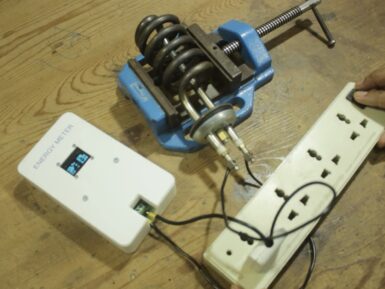
Overview
The RCWL-0516 is particularly suitable as an alternative to using a PIR motion sensor.
When it detects a moving object, the output changes from a low logic level to a high level (3.3 volts). Appropriately interfaced (Arduino, Fishino or other), it can be used for the automatic opening of electric doors and gates, automatic lighting.
Detection range is about 9 meters.
Tech specs
- Power supply: from 4 volts to 28 volts
- Consumption: typical 2.8 mA; max. 3 mA
- Detection distance: from 5 to 9 meters
- Transmission power: typical 20 mW; max. 30 mW
- Output voltage and current: 3.2-3.4 volts - 100 mA
- Operating temperature: from -20°C to +80°C
- Pin definition: 3V3: 3.3 volt output voltage
- GND: negative power supply
- OUT: when it detects a moving object, it changes from a low level to a high level (3.3 volts)
- VIN: positive power supply from 4 volts to 28 volts
- CDS: if kept low, less than 0.7 volts, the output will always be low even in the presence of motion
Conformities
Get Inspired

Exploring the digital twin synthetic data generation and AI-oriented advancements on real-world shipping operations w/ NVIDIA Omniverse.

The primary appeal of microcontrollers is their versatility. They are, essentially, the embedded equivalent of computers — general purpose devices that can perform a wide range of functions. And to get the most out of a microcontroller, you’ll also want connectivity suitable for your application. That’s why we released the Arduino Nano Matter and YouTuber Mr Innovative has shared a great video illustrating how easy it is to build an energy meter using this new development board. The Nano Matter is based on the powerful Silicon Labs MGM240S, which has an Arm Cortex-M33 processor and support for a number of wireless connectivity options, including 802.15.4 (Zigbee and Thread), Bluetooth® Low Energy 5.3, Bluetooth® Mesh, and Matter. That makes the Nano Matter perfect for smart home and other Internet of Things applications. To demonstrate that, Mr Innovative created an energy meter that would be useful to many people around the world. This unit monitors the power flowing to any device or appliance connected to mains AC power. It displays information about that power consumption on a small OLED screen, and also sends the data over Bluetooth to a connected smartphone for logging. The Nano Matter can’t monitor mains AC voltage directly, so Mr Innovative used a ZMCT103C current transformer for the job. The Arduino receives its power from a 9V battery and the components fit inside a 3D-printed enclosure. A printed sticker label gives that a nice, smooth top finish.







